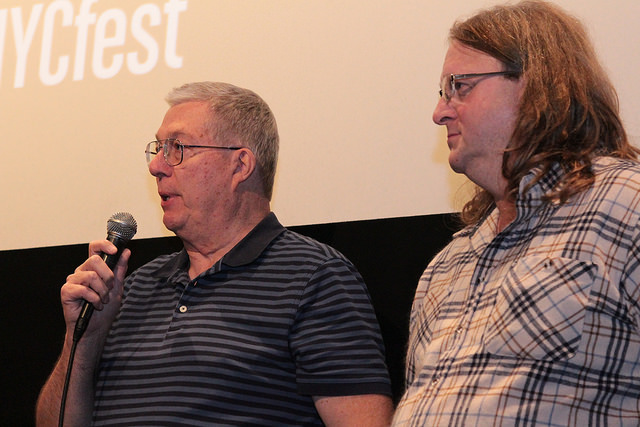How to Build a Space Elevator 'Sky Line' tells the long history and promising future of an ambitious idea


Written by Laura Dattaro
In 1979, science fiction giant Arthur C. Clarke published a novel that popularized the idea of a space elevator, a cable stretching from Earth out beyond the atmosphere that would enable space travel without expensive, fuel-burning rockets. Though the concept is still in the realm of science fiction, scientists have been working for years to turn it into a reality, making incremental progress toward what would be a revolutionary invention.
In Skyline, which had its world premiere at the 2015 DOC NYC festival this week, directors Miguel Drake-McLaughlin and Jonny Leahan follow the men dedicated to getting a space elevator built, even if it happens after their lifetimes. Skyline follows their professional triumphs and failures, while detailing the history of the elevator concept and looking ahead to the enormous challenges.
Though Clarke’s novel brought the elevator to the modern public, the idea of a tower to the stars has existed for thousands of years. Biblical stories talk of a Tower of Babel reaching into the heavens, while the fictional Jack climbed a magical beanstalk to find treasures hidden beyond the clouds. It remained largely a myth until 1975, when aerospace engineer Jerome Pearson published a technical paper in Acta Astronautica that’s now considered the invention of the space elevator. (Clarke tapped Pearson for technical expertise in order to write his 1979 novel, The Fountains of Paradise.) “As a follower and lover of science fiction, I decided to tell this story,” Leahan, who has no scientific background, said at a Wednesday morning screening. “The idea has been around for a long time, but this is the first feature film about the subject matter.”
Progress was slow until the turn of the millennium, when a physicist named Bradley Edwards set out to prove the space elevator impossible–and couldn’t. Edwards founded a company called HighLift Systems with fellow elevator enthusiast Michael Laine, but the two disagreed so vehemently on business practices that they split and dissolved their company. Skyline follows the two men’s lives as they attempt to push forward on a space elevator through professional changes, a recession, and personal challenges.
While it delves into the everyday lives of passionate scientists and engineers, Skyline maintains a sense of wonder about space travel, and about the sweeping changes a space elevator could bring to Earth. Many scientists envision vast solar panel arrays in space, collecting sunlight 24/7 and beaming it down to Earth as a cheap, pollution-free, nearly infinite source of energy. But building those arrays would require getting millions of tons of materials into space, a feat that’s prohibitively expensive with rocket technology. A space elevator could change all of that, and Skyline is ambitious and optimistic enough that you leave the theater thinking it just might happen.
Laura Dattaro is a freelance journalist in New York and has written for the Columbia Journalism Review, symmetry magazine, and others. Follow her on Twitter at @ldattaro




